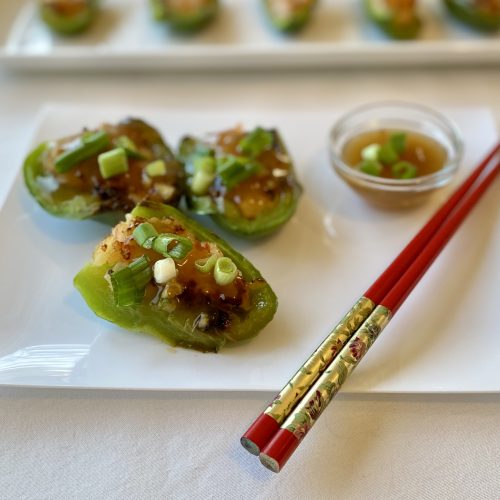 Food waste is a growing concern now more than ever!
Food waste is a growing concern now more than ever!
Research from the National Zero Waste Council found that 63% of the food that we throw away – mostly veggies and fruit – is avoidable and could have been eaten. The edible food that we toss into our compost or green bins adds up to $1,100 per year for the average household! Across Canada, all of this household food waste amounts to about 2.2 million tonnes of edible food that’s thrown out each year. To put that into perspective, picture this – EVERY DAY in Canada, we waste*:
- 4 million potatoes
- 2 million tomatoes
- 2 million apples
- 555 thousand bananas
- 470 thousand heads of lettuce
- 1 million cups of milk
- 750 thousand loaves of bread AND
- 450 thousand eggs
(*Reference: https://lovefoodhatewaste.ca/about/food-waste/)
WHOA!! OK, let’s just take a moment to “digest” that info!
Aside from the financial costs of food waste, food that sits in landfills creates methane, a greenhouse gas contributing to the climate crisis. With Earth Day approaching on April 22, it’s a reminder that we can and must reduce food waste. Here are a few ideas to get started along with links to more tips and cookbooks.
Store your fruits, veggies and herbs to help them last longer
Did you know that wrapping banana stems slows down the ripening? Check out my national TV interview for these and other tips on how to store celery, lettuce, avocado and freeze your leftover herbs.
 For more food storage tips, go to https://lovefoodhatewaste.ca/keep-it-fresh/ or https://www.halfyourplate.ca/fruits-and-veggies/store-fruits-veggies/
For more food storage tips, go to https://lovefoodhatewaste.ca/keep-it-fresh/ or https://www.halfyourplate.ca/fruits-and-veggies/store-fruits-veggies/
Plan your meals
Look for recipes that use the same ingredients enjoyed in different ways. Take a bunch of carrots for example – eat them raw with a dip; chop them for a soup or chili; grate them for a salad or muffins; cut them into matchsticks for roasting; or slice them for a stir-fry. What about yogurt? Make a yogurt parfait for breakfast or dessert; mix a big scoop of yogurt into your muffin or loaf batter; and add a swirl of yogurt into your carrot soup!
Use what you have on hand
Be creative. What foods and ingredients do you already have on hand? How can you turn those foods and ingredients into a yummy meal? In a recent study of over 1,000 Canadian families by Hellmann’s and BEworks (a consulting firm studying behaviour economics and insights), food waste was reduced by 33% when participants planned a “Use-up day” each week by making a meal with soon-to-expire ingredients.
Try recipes like Sweet Potato Enchiladas, Veggie Fritters or Tomato Risotto with Grilled Romaine lettuce – all from the Rock what You’ve Got free e-cookbook by the Guelph Family Health Study. Even IKEA has launched their The Scraps Book free downloadable cookbook with recipes using food scraps from featured chefs across North America.
Practice first in, first out (FIFO)
Anyone else have hidden cans of tuna at the back of their cupboard? When putting the groceries away in your fridge, freezer or pantry, use the FIFO rule. Rotate the canned goods, eggs, yogurt, juice and other items so that the ones with the closest best-before dates are moved to the front to be eaten first. I also label my leftovers with the date written on a piece of masking tape so I know which ones to eat first.
Know the difference between the “best-before date” and the “expiry date”
Only packaged foods with a shelf-life of 90 days or less must have a best-before date. Foods that will last longer than 90 days (such as canned food, rice, pasta, dried beans, nuts and frozen food) don’t need a best-before date, but many food companies choose to put one on anyway.
Best-before dates are based on the food’s freshness and quality, rather than the safety of the food. According to the Canadian Food Inspection Agency, you can buy and eat an unopened food AFTER the best-before date has passed. However, keep in mind that after the best-before date, the food may lose some of its freshness, flavour and nutritional value, and /or its texture may change.
The expiry date is not the same as the best-before date. Only certain foods like meal replacements / drinks and infant formulas must have an expiry date. After the expiry date, the nutritional value of these foods will be different than what is listed on the label. Don’t eat these foods if they are past their expiry date.
What’s your “fridge clean-out” recipe? Take a photo and tag me on Instagram or Twitter @SueMahRD – I want to see your recipes!
Want more? Read my other blogs:
Put the Freeze on Food Waste
10 Ways to Eat Better for the Planet

 Food waste is a growing concern now more than ever!
Food waste is a growing concern now more than ever!
